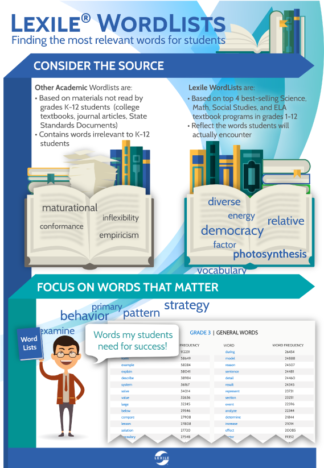March 14th is Pi Day, a day that has gained notoriety in recent years as a day to think about the irrational number pi and also to eat pie (any excuse, right?). In attempting to explain the concept of pi to my 7-year old grandson, I realized that I would need to rephrase many words in mathematics vocabulary in order to do so. I started to say, “Pi is the ratio of the circumference of a circle to its diameter,” and then realized that in that sentence he would likely only know the word “circle.” So I started again and said, “Take the distance around the circle and divide by the distance across the circle” but then realized he would not understand the word “divide.” So I ended up just serving him some pie.
This dilemma of a youngster not understanding mathematics academic language got me thinking about how difficult it could be for a student whose first language is not English to explain their thinking using mathematical language.
Every Mathematics Teacher is a Language Teacher
Last fall, I read the paper Positioning Multilingual Learners for Success in Mathematics, jointly released by the National Council of Supervisors of Mathematics: Leadership in Mathematics in Education and TODOS: Mathematics for ALL. One of their position statements read: “Every mathematics teacher is a language teacher — particularly the academic language used to formulate and communicate mathematics learning.”
 One way that mathematics teachers can adapt to becoming language teachers is to access the free online tool Lexile® WordLists at hub.lexile.com/wordlists. The WordLists tool allows teachers to access words that students will actually encounter in mathematics (as well as science and social studies) to help students to learn the right mathematics words at the right time.
One way that mathematics teachers can adapt to becoming language teachers is to access the free online tool Lexile® WordLists at hub.lexile.com/wordlists. The WordLists tool allows teachers to access words that students will actually encounter in mathematics (as well as science and social studies) to help students to learn the right mathematics words at the right time.
Unlike many word lists based on out-of-date resources, the words included in the WordLists tool come from the best-selling K-12 print and digital instructional programs over the past decade. And, unlike many existing academic vocabulary resources that were developed using texts intended for adults, the WordLists tool includes words from K-12 programs only.
Classroom Participation Is Key to Math Learning
One important recommendation that NCSM and TODOS make in their paper is that educators “Realize that classroom participation — in the form of discussing, explaining, writing, and presenting — is critical to multilingual learners’ success in mathematics.” Using the WordLists tool, mathematics teachers can create customized lists of important words to address vocabulary gaps for multilingual learners and prepare them for the mathematics words they will encounter in class, fostering this important participation.
On Pi Day, let’s recognize the importance of being able to use correct mathematics language to explain how to calculate pi. My grandson can definitely explain how to eat pie! Now, who’s ready for a slice?
